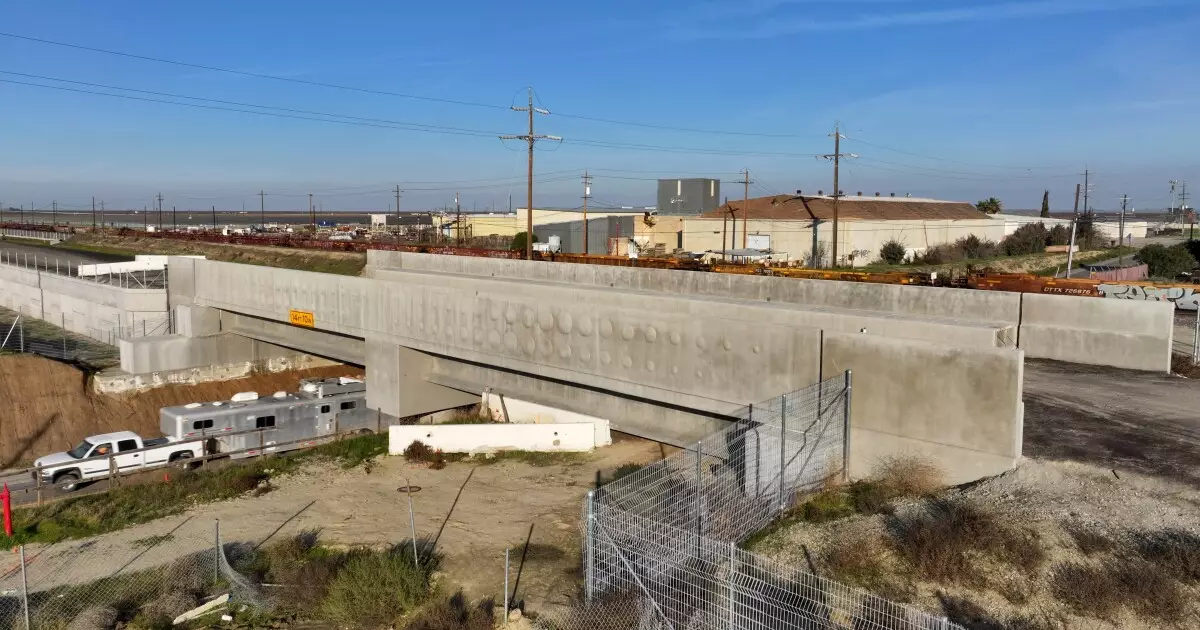California High-Speed Rail Under Scrutiny: The Trump Administration’s Investigation

The California High-Speed Rail (CHSR) has been a hot topic of discussion among politicians, economic analysts, and the general public for years. With significant funding and an ambitious vision for transforming transportation in the state, the project has faced a myriad of challenges. Recently, the Trump administration has intensified scrutiny of this megaproject, sparking debates about accountability, funding, and the future of high-speed rail in California.
On a Thursday press conference, Transportation Secretary Sean Duffy announced a formal review of the California High-Speed Rail Authority, aiming to assess whether the management of the project has adhered to the commitments agreed upon to secure federal funding. This probe could potentially result in the rescinding of approximately $4 billion in federal aid. The administration’s stance underlines a critical viewpoint—that federal funds cannot be relied upon without stringent oversight.
Duffy’s comments reflect a broader philosophy that emphasizes fiscal accountability in large-scale infrastructure projects. He asserted that the federal government must demand standards from states that accept its funding, echoing sentiments from previous discussions during the Trump administration. The question of whether California has effectively utilized taxpayer dollars comes forth as an essential consideration in the investigation.
The California High-Speed Rail project, which has been in the works for over a decade, was approved by voters in 2008, backed by a $10 billion initiative. Originally projected to cost around $33 billion and set for completion by 2020, it has become emblematic of government inefficiency, with estimates now swelling to an astounding $128 billion and a shifting completion timeline that seems increasingly nebulous. Critics point to a history of delays, budget overruns, and lackluster execution as evidence that the project may be mismanaged.
In looking more closely at the financial aspects, the California High-Speed Rail Authority claims to have spent around $15.7 billion, although official reports list this figure as $13 billion. Given that these discrepancies exist, it raises alarm bells about transparency and fiscal responsibility. The project had started with high hopes but has since become plagued with skepticism.
The scrutiny over the CHSR can be seen within the broader political discourse, especially considering its treatment by the Trump administration. The former President frequently criticized the project during his campaigns, marking it as a quintessential example of wasted government resources. Furthermore, a letter from California GOP lawmakers to Trump emphasizes the political side of the issue, requesting an investigation largely fueled by a report indicating further funding gaps and delays.
The dissatisfaction extends beyond political circles, as reflected in the protests that reacted to Duffy’s press conference. Protesters chanted “build the train!” underscoring a collective frustration regarding the stagnation of the project, even as opposition from federal powers looms.
This dichotomy—between those advocating for investment in high-speed rail and those calling for the project to be halted—reveals a fragmented public perception. The need for efficient and reliable public transit is contrasted with concerns regarding wastefulness and accountability in how public funds are managed.
As part of the inquiry, the Federal Railroad Administration may impose remedial actions, including reimbursement withholding or ending cooperative agreements. It raises questions about the future of California’s ambitious transportation vision and what a potential funding cut could mean for the broader economy, particularly in regions that have invested heavily in the promise of rail expansion.
Moreover, as highlighted by the CHSRA’s CEO, Ian Choudri, the rail project claims to have generated approximately $22 billion in economic impact, spotlighting the complicated intersection of infrastructure and economic development. This underlines how easily projects can become entangled in political and operational disputes, jeopardizing their intended benefits for the public.
The investigation into the California High-Speed Rail serves as a microcosm of deeper issues surrounding large-scale public projects, federal and state relations, and a cultural commitment to modernizing infrastructure. The outcome of this inquiry could not only influence the future of transportation in California but may also set a precedent for how similar projects are managed nationally, emphasizing the need for both accountability and ambition in the realm of public service.





